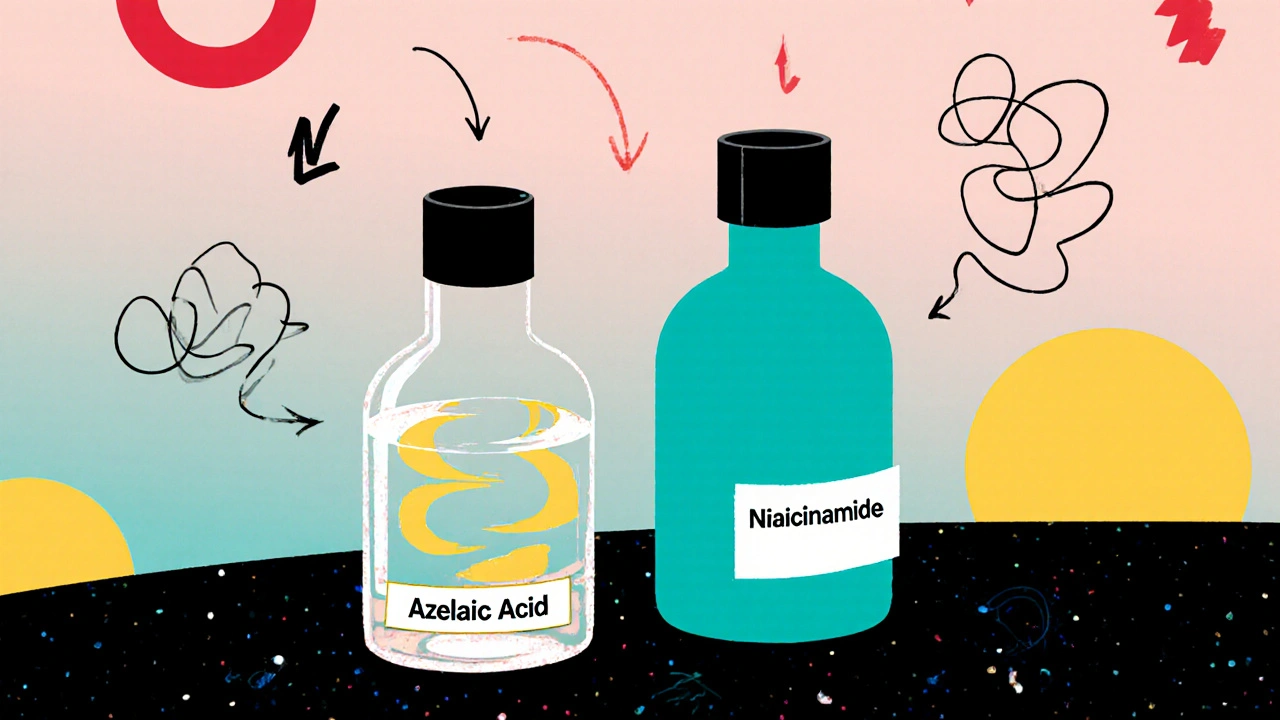Azelaic Acid: What It Does, Who It Helps, and What You Need to Know
When it comes to treating stubborn acne, redness, or uneven skin tone, azelaic acid, a naturally occurring dicarboxylic acid used in topical treatments for skin conditions like rosacea and acne. Also known as 1,7-heptanedioic acid, it works by calming inflammation, killing acne-causing bacteria, and slowing down excess pigment production. Unlike harsher acids like retinoids or benzoyl peroxide, azelaic acid is gentle enough for sensitive skin and safe to use during pregnancy, making it a go-to for people who can’t tolerate stronger options.
It’s not just for acne. rosacea, a chronic skin condition causing redness, visible blood vessels, and sometimes bumps on the face responds well to azelaic acid because it targets the inflammation that triggers flare-ups. Studies show it reduces redness and swelling as effectively as some antibiotics—without the risk of antibiotic resistance. And if you’re dealing with post-inflammatory hyperpigmentation, dark spots left behind after acne or injury heals, azelaic acid helps fade them over time by blocking the enzyme that makes too much melanin.
You’ll find azelaic acid in creams, gels, and foams, usually at 15% or 20% strength. It’s not an overnight fix—most people see results after 4 to 8 weeks of daily use. Some feel mild stinging or dryness at first, but that usually fades. It pairs well with moisturizers and sunscreen, and unlike some acne treatments, it won’t make your skin more sun-sensitive. That’s why it’s a favorite among dermatologists for long-term maintenance.
People with darker skin tones often benefit the most from azelaic acid because it doesn’t cause the lightening or irritation that other treatments might. It’s also one of the few topical options that works on both acne and discoloration at the same time, cutting down the number of products you need. If you’ve tried everything from salicylic acid to antibiotics and still struggle with red bumps or stubborn dark spots, azelaic acid might be the missing piece.
Below, you’ll find real-world guides on how azelaic acid fits into broader skin care routines, what to avoid mixing it with, how it compares to other treatments like retinoids or niacinamide, and how to use it safely with other medications. Whether you’re just starting out or looking to optimize your current routine, these posts give you the facts without the fluff.

Azelaic Acid + Niacinamide: Clear Skin Combo Guide
- Oct, 21 2025
- 13
Discover why azelaic acid and niacinamide make a powerful duo for acne, redness, and dark spots, and learn how to add them safely to your skincare routine.
Categories
- Health and Wellness (52)
- Medicine (36)
- Health and Medicine (34)
- Women's Health (9)
- Mental Health (8)
- Men's Health (7)
- Beauty and Wellness (4)
- Health Information (4)
Archives
- December 2025 (24)
- November 2025 (25)
- October 2025 (27)
- September 2025 (14)
- August 2025 (3)
- July 2025 (2)
- June 2025 (2)
- May 2025 (3)
- April 2025 (4)
- March 2025 (4)
- February 2025 (2)
- January 2025 (3)
- online pharmacy
- medication safety
- dietary supplement
- health benefits
- dietary supplements
- prevention
- fertility
- online pharmacy Australia
- diabetes medications
- treatment
- treatment options
- benefits
- connection
- drug interaction
- drug interactions
- pregnancy
- Cancer Treatment
- depression medication
- antidepressants
- quality of life
